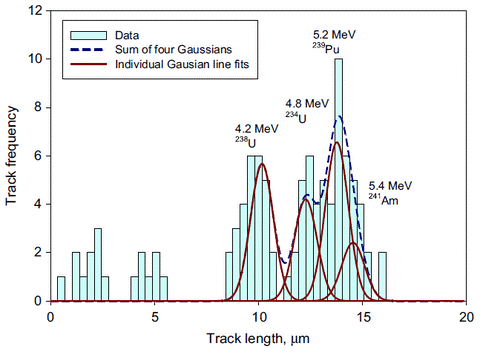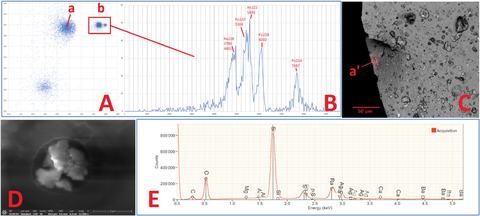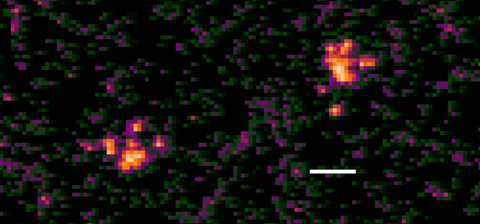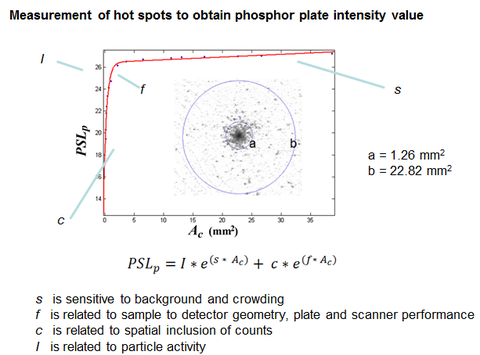Description
The Group engages in a wide range of methods applicable to the detection and characterization of nuclear materials. The work can benefit environmental studies, waste remediation, naturally occurring radioactivity detection and characterization and general radioanalytical metrology. Expertise in microscopy, autoradiography, nuclear counting, and similar techniques complements more traditional methods such as x-ray fluorescence and mass spectrometry.
Examples of research and applications include:
- Trace detection and quantitation
- Alpha Spectrometry
- Low-background gamma spectrometry
- Imaging nuclear spectrometry by fluorescent and electronic pixel detectors
- Geometrical source-to-detector modeling
- Isotopic identification and activity measurements
- Actinide detection and quantitation
- Expanded characterization of Reference Materials
- Soil and sediment trace radiological characterization
- Ambient background ionizing radiation measurements
- Radiological disequilibria analysis
Autoradiography, microanalysis and mass spectrometry capabilities are being expanded by research into new imaging spectrometry approaches such as those based on fluorescent nuclear track detectors (Fig. 1) and electronic imaging alpha spectrometry (Fig. 2). These techniques allow for micro-Bq sensitivity (Fig. 3) and offer complementarity cross-validation with independent methods.
For example, radioactivity on historical documents from the 1930s was recently discovered at NIST. The documents were correspondence between the former National Bureau of Standards (now NIST) and Mme. Marie Curie’s successor to the Radium Institute in Paris France, her daughter Irene Joliot-Curie. Without damaging the documents or the dust on them, autoradiography and imaging alpha spectrometry, followed by scanning electron microscopy (SEM) and energy-dispersive x-ray analysis (EDS), identified and characterized individual radium particles (Fig. 2). Most other analytical approaches would have either destroyed the physical nature of individual particles, or even if nondestructive, been unable to produce discrete particle information such as particle morphology, size, or chemistry.
Similar approaches were used to characterize and quantify radioactivity on air filters collected near Fukushima, Japan after a tsunami destroyed portions of a nearby nuclear power plant. In this work, it was also shown how point-sources of radioactivity, in this case from cesium isotopes, could be quantified by autoradiographic techniques, and their depth in the filter media determined (Fig. 4).
The approaches based on quantitative autoradiography and imaging nuclear spectrometry for micro-Bq level analysis are relatively new, making metrology developments a focus of much of the work (Figs. 1 to 4). The developments in metrology are well situated to expand the characterization of Standard Reference Materials (SRMs) to benefit laboratories world- wide in making accurate and precise radionuclide measurements.





